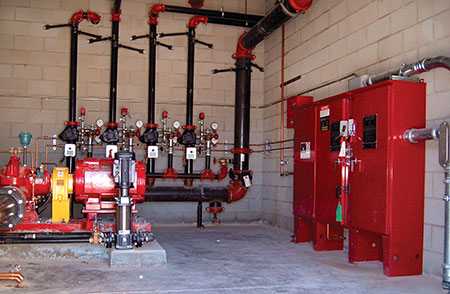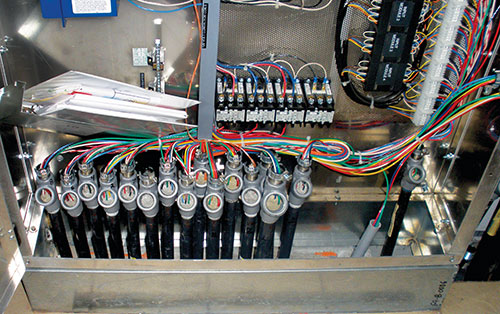Article 90 is rarely given consideration when someone references the National Electrical Code (NEC). However, this is where we find the purpose statement for this code, and it shapes the entire application and enforcement of the requirements in the NEC. According to Section 90.1, the purpose of the NEC is for “…practical safeguarding of persons and property from hazards arising from the use of electricity.” Section 90.1 makes it clear that the requirements in the NEC will result in an essentially safe electrical system, but that it may not be efficient, convenient or even adequate for good service. The code explicitly states that the NEC is not a design manual and is not intended for untrained persons. By implication, this means that the NEC is intended primarily for electricians, electrical engineers and electrical inspectors, since these are the professions that are trained to understand and apply the requirements within this code.
Section 90.2 indicates where to apply the NEC and what is outside the scope of the NEC, such as railways, generating plants and substations under the control of an electric utility, ships, mines and more. Reading through the scope can help the user understand where to draw the line in applying the NEC. For example, the wiring inside an office building belonging to an electric utility is subject to the NEC, but the electric meter on the same building is not subject to the NEC.

Figure 1
Article 90 also describes the layout of the code in 90.3. This is helpful for understanding the relationship of general and special requirements found in various chapters of the code. This is one of the first items I cover with every new class of combination inspectors. I hold Chapters 1 through 4 between my fingers and explain that 90% of what they do will be found in these chapters and that applies equally to inspections and certifications testing.
Let’s go into a few more important details within Article 90. NEC 90.5 explains which parts of the code are mandatory rules and which are permissive rules, and explains the differences between “shall” and “shall not” versus “shall be permitted” and “shall not be required.” Often we have misunderstandings when enforcing the code and this is frequently due to misinterpreting a few simple words as listed in the previous sentence. For instance, in 250.20, specified alternating-current (AC) systems “shall” be grounded according to the provisions and exceptions listed, whereas other AC systems “shall be permitted” to be grounded.
NEC 90.9 gives us the ground rules regarding the standards for measurement, when and how we make our code a universal code with both metric and U.S. Customary units. Explanations of hard and soft conversions are given, along with when each must be applied.
NEC 90.4 is often referred to (jokingly, of course) as “the inspector is always right” clause. What it actually states is that the authority having jurisdiction (AHJ) for enforcement has the responsibility of interpretation of the code. It further states that by special permission the code may be waived or alternate methods may be used as long as we meet and maintain effective safety. Through years of code enforcement, I’m glad to say that I’ve very rarely had to use 90.4. The few times I’ve been forced to use it, there was simply no other resolution to a disagreement or problem. Some enforcers feel this is their crutch and rely on it often, but usually if you have a good understanding of the code the answers are there and 90.4 doesn’t have to be used.In order to utilize the code properly we have to understand the purpose and format of the requirements, and this is what Article 90 explains for us. However, I’d like to share the observation that a very high percentage of field personnel have never read Article 90. Take a few minutes and read it. Just like with any sport, it is very difficult to play if you don’t know the rules, and Article 90 gives us the basic rules of the NEC.
Chapter 1
Article 100 is a part of the code that grows with every code cycle. The reason for its continual growth is quite often the erroneous enforcement of various parts of the code. These mistakes aren’t intentional, but everyone who reads the code may read it a little differently and thus enforce it in a unique way that was never intended when the code language was written. When this happens, the language in the next cycle will be clarified or often a new definition is added to help clear up the situation. For example, in the 2008 cycle the definitions of “clothes closet” and “kitchen” were added. Even though we generally think we know what a kitchen is, a clear definition was required due to the misapplication of certain code requirements.

We’ll spend some time in Article 100 and cover a few of the definitions, which will help us with later chapters and articles. Grab your codebook and follow along. Since I’m not going to cover each definition, and the ones we do discuss will not be verbatim, you will have to read the language yourself. The following definitions are taken from the 2008 NEC. We will approach these in alphabetical order since that is how they are printed in the code.

Figure 3
The first ones to review are the trio of accessible definitions. There are different degrees of accessibility: there are conditions relating to equipment, wiring methods and the most restrictive beingreadily accessible. When we see “readily accessible” in a code requirement, this means you must have quick access without climbing over or removing anything. Generally speaking this means getting to something without the use of tools, ladders, etc. It does not prohibit the use of a locked door or gate, but it would require the personnel who need access to the equipment to have a key easily available.
Ampacity indicates the maximum current a conductor can carry continuously without exceeding the temperature rating of the conductor. The temperature rating will be marked on the conductor, e.g., 75°C or 90°C. Next we’ll skip to the termbonded, or bonding, and it simply means to electrically connect two or more items together. This is one of the terms that have for years caused confusion; however, there has been a concerted effort to simplify and clarify its use in the code.
Branch circuit is the next term I go over in detail with any class, and again we have several definitions related to branch circuits. The general idea here is that it is the portion of an electrical system from the final overcurrent device to the outlet. The other branch circuit related item we cover is the multiwire branch circuit, which refers to the concept of sharing a neutral (we’ll discuss neutrals later) with more than one ungrounded or hot conductor, depending on the number of phases we have in our distribution system. Don’t worry, we’ll get into phases, neutrals, grounded and ungrounded conductors later, just bear with me for now until we get to those explanations.The definition for circuit breaker has several parts, but essentially it is a device that can manually open and close a circuit and will automatically open in the event of a short circuit or overload. When we get to Article 240, we’ll delve more deeply into the different types of circuit protection.
Take a moment to review the conductor definitions. Pay careful attention to the fact that a covered conductor is not equivalent to an insulated conductor, and should always be treated as a bare conductor for working clearances. Generally when we discuss conductors, we will be referring to either bare or insulated.

Figure 4
The next term to review is continuous load. This is a very important and often overlooked concept which can result in several missed test questions on certification tests if misunderstood. It means that if you have a maximum load that is present for three or more straight hours, we have to take this into consideration when performing load calculations and sizing overcurrent protection. This definition was first added in the 1965 NEC, and there was a great deal of discussion among the code-making panel members before they finally settled on the time period of three hours. The three-hour time period came from data showing that conductors reach their steady-state temperature after between 2 and 3 hours of operation (depending on conductor size) at the maximum load.
The next definition of interest is dead front. This is one of those unique terms that when I ask a new class “What is a dead front?”, I usually get all kinds of answers that can be very entertaining. Basically, it describes the cover that encloses the live parts of electrical equipment, such as panels. Next we move on to the termdevice,which was further modified in the 2008 code, and it refers to a unit that carries or controls electricity as its principal function, such as a switch or a receptacle. The last definition that we’ll cover in the “d” section is disconnecting means, which is simply a device used to interrupt the electricity from the source. This can be a breaker, switch or just a cord and plug.
Feeder is the next term and, no, it isn’t a piece of equipment that is used to provide for livestock fortification! The feeders are the conductors that are installed between the service equipment and the final overcurrent device, so now we have completed the system of feeders and branch-circuit conductors in our wiring system. Any conductor upstream of the branch circuit is considered a feeder until we get to the service conductors, which will be covered later.
Now we must start with the “g” definitions, which include the dreaded terms of grounding, grounded and so on. Take a look at your codebook and you’ll see ten terms starting with “ground.” The very first is the simple term ground, which refers to the earth. In other countries, grounding is sometimes referred to as earthing. Electrical equipment that is in some way connected to the earth is considered grounded, and a conductor intentionally connected to ground is considered a grounded conductor, a concept we’ll discuss in depth in Article 200. Now we’ll jump to grounding conductor which is a conductor used to connect a piece of equipment or the grounded circuit to a grounding electrode(s).
Are you confused yet? Because of the similarity in the definitions, this is usually where a new class starts to look glassy-eyed. Don’t worry; we will clear it up in Chapter 2 of the NEC. The last two ground items we briefly cover are grounding electrode and the grounding electrode conductor (GEC). These two work in unison, as the grounding electrode is an object that provides a direct connection to ground (such as a ground rod) and the GEC is the conductor from the electrode to the equipment or system grounded conductor.
This is a good place to stop, but spend some time reviewing the definitions in Article 100. Becoming familiar with the definitions is essential to understanding the language in the body of the code. The next article will continue with the remaining definitions; then we will move on to the most often used requirements in Chapter 1.










Find Us on Socials